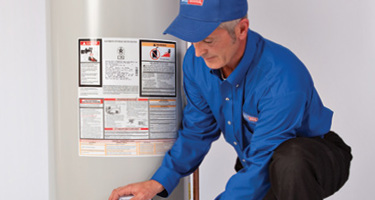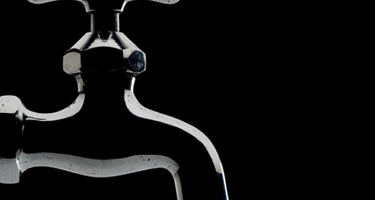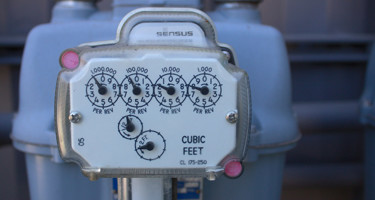
So you recently went to the bathroom, flushed when you were finished, and closed the toilet lid. But as you were going to wash your hands (hopefully your mom raised you right!) you notice something odd with the old commode.
You lift the toilet lid again and that's when you see it ... The toilet tank is not filling back as usual.
A common bathroom issue we receive regular local plumbing repair calls about are people telling us that their toilet's tank is slow to refill with water or not filling up with water at all.
Every time you flush, toilet tanks are supposed to refill with water. The water level should be about a half inch below the overflow tube and take around 10 seconds to refill. When a toilet is not filling up with water, it is a sign of an issue that may be a simple weekend project fix or require a certified plumber's assistance.
There are many things that could be causing this, so it is best to go over each possibility one-by-one. We'll show you how to fix it if your toilet isn't filling with water or if it's taking too long.
Misadjusted Fill Valve
The most common reasib for a toilet tank not filling is a faulty fill valve. The purpose of toilet fill valves are a tube assembly that signals the toilet when it is time to fill and stop filling.
To begin, inspect it to see whether anything is trapped inside the tube and that the tube itself is undamaged with no leaks. Debris or silt can clog fill valves over time, and will prevent the toilet to fill properly and shut off. This results in excessive water flow and a toilet tank overflow or continued running of toilet water.
The anatomy of a toilet's valve is determined by the age and manufacturer. You may be able to modify the valve to alleviate your toilet's filling problems.
If your toilet's fill valves has a screw on top, turn it with a flat-head screwdriver. Turning the adjustment screw clockwise allows more water to enter. In the other direction, turning the filling valve screw counter clockwise limits water flow into the toilet.
If your tank uses adjusted cylinders, remove the toilet cap lid and find the fill valve that is located to the left side of the tank. There may also be a clip on the side of the fill valve rather than a screw on top. Pinch the float clip on the side of the float valve and slide it up to let in more water.
The amount of water required to fill the valve is increased by pinching the clip and sliding it upwards, while the necessary amount of water is reduced by sliding it downwards.
Misadjusted Float Arm or Ball
The toilet float ball and arm technique is still utilized in many toilets today. Your toilet may not fill if either of these parts are faulty.
The float ball and arm is connected directly to the toilet fill valve, and controls water flow into the toilet tank from the toilet bowl after it has been flushed. If this part is either worn out or adjusted incorrectly, it will either allow too much water to flow into the toilet tank (leading to overflowing) or too little water (leading to a toilet tank that never fills).
Adjusting the toilet ball float and arm is frequently required to allow more water into the tank and to fill entirely. To raise the ball to the desired height, simply bend the arm slightly upward. You may need to fiddle with it a bit to get it right so water fills properly.
Some float arms also feature a screw adjustment, which you can use if necessary.
If the arm is broken, it will most likely need to be replaced. Fortunately, there are inexpensive kits available at any local hardware store you may install yourself.
Low Water Pressure
One of the most common things to check if your tank isn't filling properly is water pressure. If there is not enough water pressure getting up to the toilet tank, it will shut off before filling completely.
Check the water in your bathroom sink. If no water is running in your house, then it's likely a problem with the main line. Make sure you're getting municipal water from your home or business. If water isn't reaching your bathroom but is entering the property, the low water pressure is most likely due to a blockage or leak in your interior plumbing system.
It might also indicate that your water pump is failing, especially if it occurs to many tenants in a single building. If you have a tall structure, you may notice that the higher levels of your water pressure are reduced.
You can also check your toilet manufacturer's rating on water pressure (usually stamped somewhere on the toilet tank), and then compare that rating to your home's water pressure. If the toilet requires a greater water pressure than is available, you will need to call a plumber or your local water company to address this issue before anything else can be done.
Worn-Out Flapper Valve
The toilet flapper valve is a rubber valve located at the bottom of your toilet tank. Its purpose is to prevent the tank water from emptying into the toilet when it isn't being used. If there's a small lift chain keeping it in place, make sure the chain isn't caught beneath the valve, which would cause it to not seal properly. The chain occasionally has to be updated or shortened.
In other situations, a leaking flapper valve may simply be no longer effective due to being old and worn out. Metal flappers were previously used on older versions and are prone to corrosion with time, resulting in them becoming deformed or rough, preventing them from sealing correctly against the valve seat when turned off.
Metal flappers have been phased out in recent years and are no longer used on newer homes. Silicone rubber is now instead used to form a water-tight seal on these models. The flapper valve gasket, if it has become worn or hardened, must be replaced.
A handy person can perform this task, or any local plumber can do it for you depending on your level of comfort.
Damaged Toilet Bowl
Another possibility is that your toilet bowl itself may be damaged in some way. A cracked toilet bowl with a slow leak can keep your toilet from filling, as the water leaks out as the bowl fills. If the crack is on the back of the bowl out of sight, it may go unnoticed, although you'll typically see water on the floor.
Shut off the water supply to your toilet using the valve under the toilet or the valve that feeds water to your bathroom if there is a crack in the bowl. Allow no more water into your toilet and avoid using it! It may collapse under a user and flood your bathroom with water, among other possibilities. If there is a room or tenant beneath the bathroom, this area could be damaged as well.
You'll want to call a professional plumber right away to determine if your existing toilet can be repaired or if you'll need to new toilet installation service.
Damaged Overflow Tube
The overflow tube is a large tube that transports excess water in the toilet tank to the toilet bowl, in order to avoid overflowing. It's in the center of the toilet tank and is effectively a component of the flush valve.
If you have a cracked overflow tube or is some other way damaged, toilet water will either continue to fill up past the normal level (leading to an overflowing toilet) or toilet bowl water will not get drained into the toilet drain hole at all (again leading to overflowing).
Fortunately, you can take care of this yourself with replacement parts. Simply remove the overflow tube and insert the new one. You should make sure that the new tube is the same size as the old one, of course. Alternatively, you may simply replace the whole flush valve mechanism.
Damaged Toilet Trip Lever
The toilet trip lever assembly is an important component of the toilet's filling cycle. The flush handle's trip assembly is the portion that connects to the tank. This assembly might be positioned incorrectly, causing the flush cycle not to finish correctly.
It's possible that this part will cease signaling to the toilet, telling it to fill with water immediately. There will still be water in the toilet holding tank, which will continue running into your toilet bowl without any sort of signal from you informing it when you're ready for it to flush again.
Toilet Shut Off Valve Not Fully Open
Finally, the most common cause of a toilet tank not filling is something with your home's water supply itself.
Typically, there is a shut off valve located somewhere near the toilet which controls whether or not the toilet gets water from the main water supply line. This valve can become misadjusted over time so that it does not fully open when activated by the handle on the toilet itself.
When this problem occurs, toilets stop getting water which leads to toilet bowl water not filling up. If this happens, your toilet tank will not fill up past the level of the toilet bowl itself until you manually open the shut off valve or water is restored to full pressure. At that point, toilet water will refill the toilet tank as it normally would.
Toilet Tank Still Not Filling Up? Call ARS/Rescue Rooter
A toilet problem isn't the end of the world. It's possible that your toilet tank not filling properly is because of a problem with its plumbing or the components that make it run.
A toilet may operate despite faulty components, which is unusual. A toilet's components should be replaced sooner rather than later if they start to break, even though it is tempting to ignore it. They might fail if left ignored. Even if the toilet parts do not completely break down, malfunctioning fittings use water and raise your water utility costs.
If your toilet tank won't fill completely, you'll need a plumber from ARS/Rescue Rooter. This indicates that something is wrong in your pipes deeper than the toilet itself, which is why you should hire a professional.
Call our plumbers at 866-399-2885 or find your nearest ARS/Rescue Rooter location to schedule service on your toilet today!






